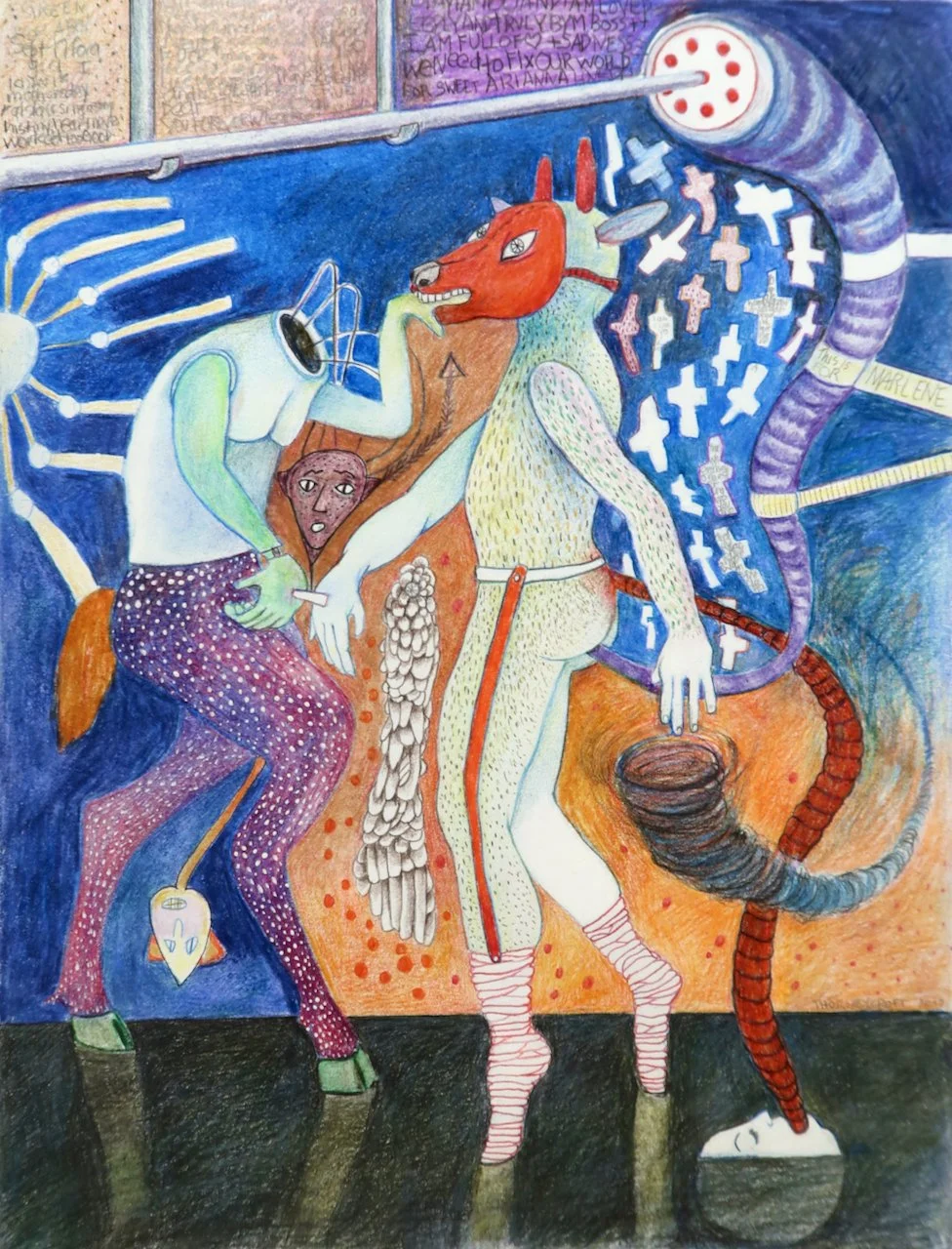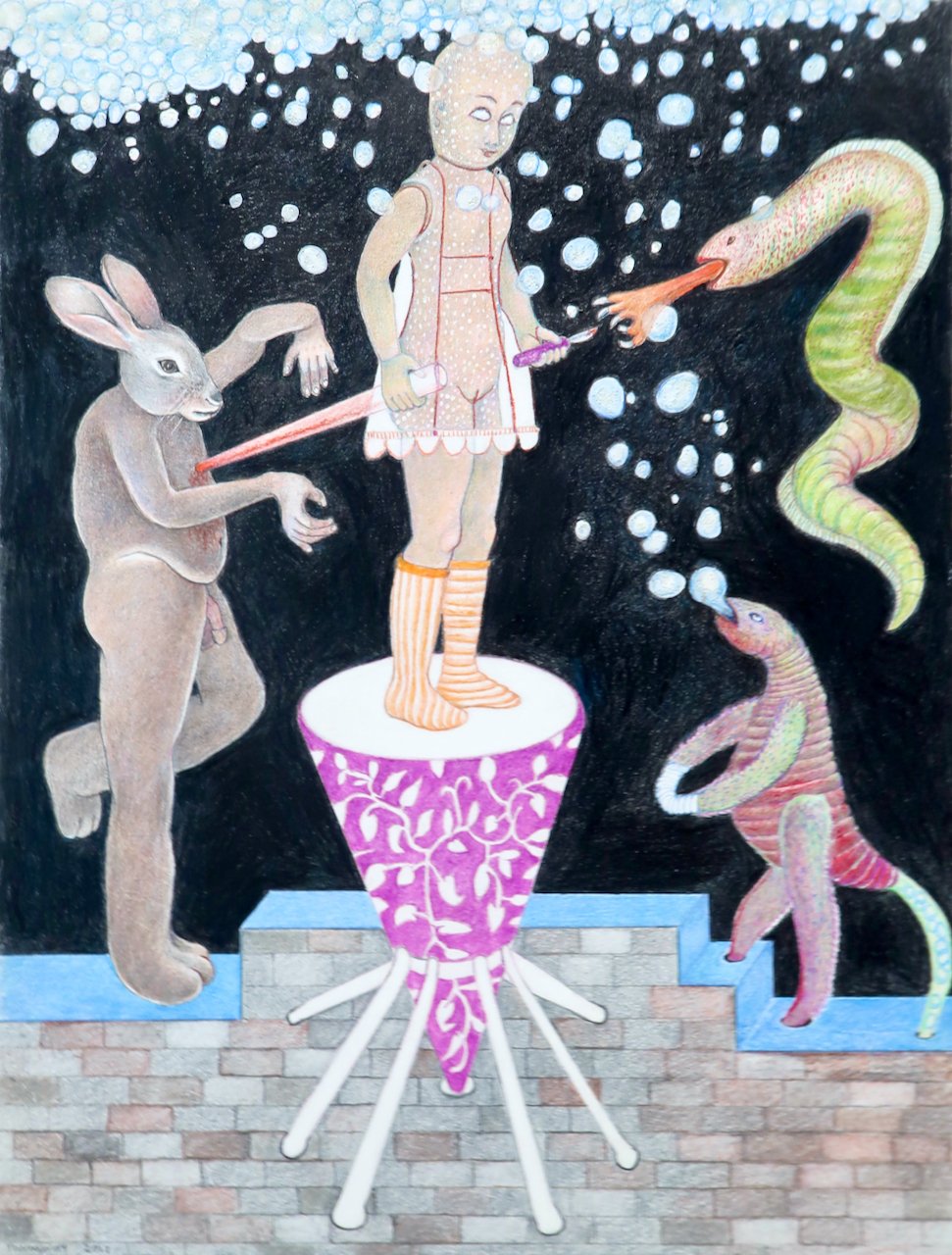Diana Thorneycroft
/June 10 - 24
Opening Reception: June 10, 1-3 PM
Artist in Attendance
For this exhibition, Diana Thorneycroft has created highly detailed drawings in response to recent world events. Her works, whether they are illustrated in a playfully surreal way or are highly representational, depict the physical and emotional impact of the forces around us. As a result, these drawings encourage viewers to reflect upon how shared tragedy and personal interactions impact their own day-to-day life.
24 Drawings of heartache - 21 x 40 - Graphite on paper
Essay by Martin Laflamme
Bucha, Irpin, Mariupol. There was a time when these were ordinary cities where people quarrelled and loved, where children played and dreamed. In the spring of 2022 however, they became bywords for barbarity, places where fathers were murdered in their homes in cold blood, where mothers and daughters were raped in courtyards, where sons were shot in the back and left on sidewalks bleeding to death.
The war in Ukraine is a tragedy, but there is plenty of suffering outside its borders too. Decades of unbridled consumption and blind disregard for the environment have caught up with us. Every summer, tropical storms wreak havoc along coastal areas in various parts of the world. Forest fires lay waste to communities – including our own – with horrifying regularity. All over the planet, dumps are overflowing with the toys, clothes and electronics we bought only yesterday. Plastics are poisoning our oceans.
The world is a mess. Worst of all is the fact that our species is responsible for the fiasco. We have the brains to probe the furthest reaches of the cosmos, the sensibility to create inspiring art and the imagination to expand – seemingly endlessly – the limits of technological progress. And yet, we appear unable to pull together to address the existential challenges we face.
These are bleak times and the zeitgeist has seeped into 24 Drawings of Heartache, Diana Thorneycroft’s latest series of works on paper. Scorched trees, defaced landscapes, shattered cities, industrial pollution, vicious tornadoes, mass graves. Thorneycroft paints a dark portrait of humanity without any of her trademark humour and incisive irony. Her focus is on the raw, abject and painful reality of a world spinning out of control.
For this series, Thorneycroft deliberately picked a small format, 7 x 5”, as if she feared that giving more room to her subject matter would help squalor spread beyond the page. Her choice of medium – graphite on paper – is equally conscious. Unlike photography, stop-motion animation or installations, all of which are part of her artistic toolkit, drawing is a much more immediate means of expression. There are no sets to build, no figurines to mould, no intermediate steps of any kind. The connection between thought and paper is direct and unmediated, almost primal.
Despite the gravity of the theme, it would be a mistake to dismiss the series as pessimistic – it is not. Thorneycroft is a shrewd observer and she knows that nihilism is a dead-end. Her aim is altogether different: invite viewers to reflect on the individual and collective responsibility we bear for the state of the planet. Her work is a call to arms, an urgent – and mindful – plea to change course before it is too late.
By comparison, her coloured drawings are pure and unvarnished expressions of her unconscious, each a window into her tortuous inner world. Figures of ambiguous sexuality mingle with giant bunnies, clowns and other eccentric souls. Tails, tubes and tongues, some threatening, others beckoning, are recurring and enigmatic motifs. Each scene is a carnival of bright and vivid hues that defies straightforward explanation or categorization.
In these works, Thorneycroft appeals to our voyeuristic instincts. She parades the weirdest of creatures, deformed and reconstructed bodies that are neither beasts nor human beings. She surrounds them with incongruous but beguiling details: a Christian cross on the back of a cat, a penis protruding from a floating container, a set of antlers growing out of a boy’s head. We do not know what any of it means, but this visual stream of consciousness somehow latches onto some of our deepest fears and passions. We look for sense and meaning, but find only questions and doubt. No wonder we can’t stop looking.
This is classic Thorneycroft, tugging at our curiosity, dangling beauty and wonder the better to lure us in. “Come into my world”, her images seem to say, “make yourself comfortable and look around”. The invitation is enticing, so we jump in. Only when it is too late do we realize it was a trick.
Take Dead Wood for instance. Never was fire this mesmerizing, its halo entrancing, almost hypnotizing. We want to raise our hand, touch the burning blaze, feel its warmth. We proceed to do so, but then the thought strikes: behind the aesthetic appeal of this wonderful image lies a grim reality, that of an entire ecosystem being turned into ashes.
We step back, but keep looking, horrified, pondering the implications. Somewhere in our imagination, Thorneycroft briefly comes into view, smiling, eyes aglow. Her gaze shifts downward and briefly settles on our hand, but an instant later, she is gone. All we are left with is the pulsating heat of a burning matchstick searing the tender skin between our collective index and thumb.
Martin Laflamme is a career diplomat and a writer on the arts, history and culture. The views presented here are his own.
24 Drawings of Heartache
Diana Thorneycroft is an award winning artist who received a Bachelor of Fine Arts from the University of Manitoba and a Master of Fine Arts University of Wisconsin. She has received international recognition and her work is included in numerous public collections such as the National Gallery of Canada, the Vancouver Art Gallery, and the Winnipeg Art Gallery. This is Thorneycroft’s first solo exhibition at Madrona Gallery.















































